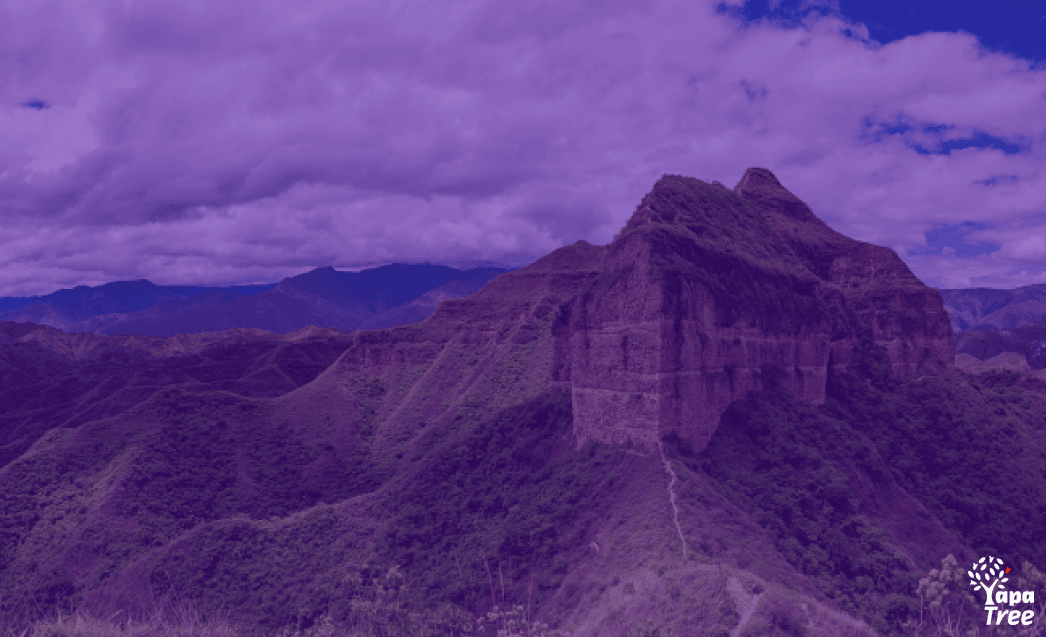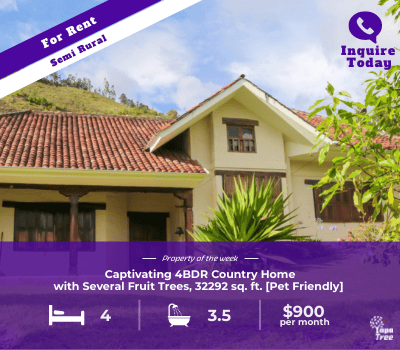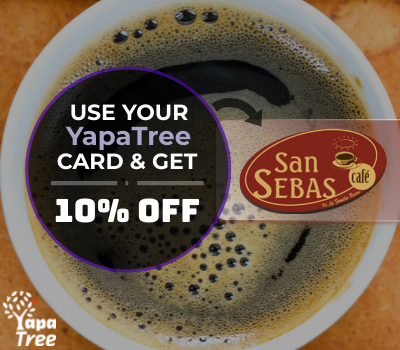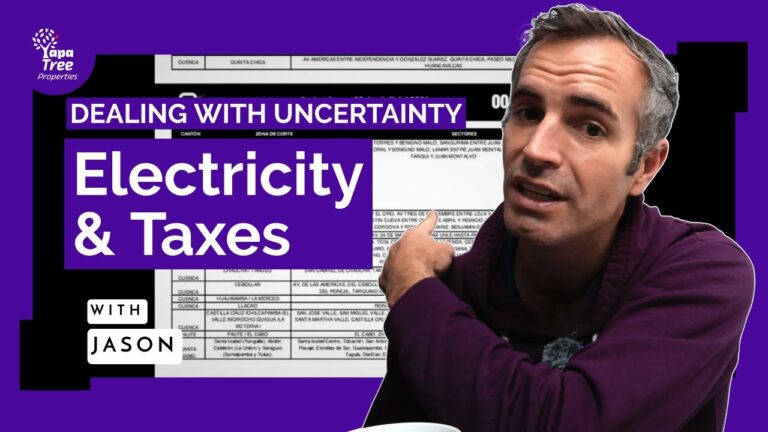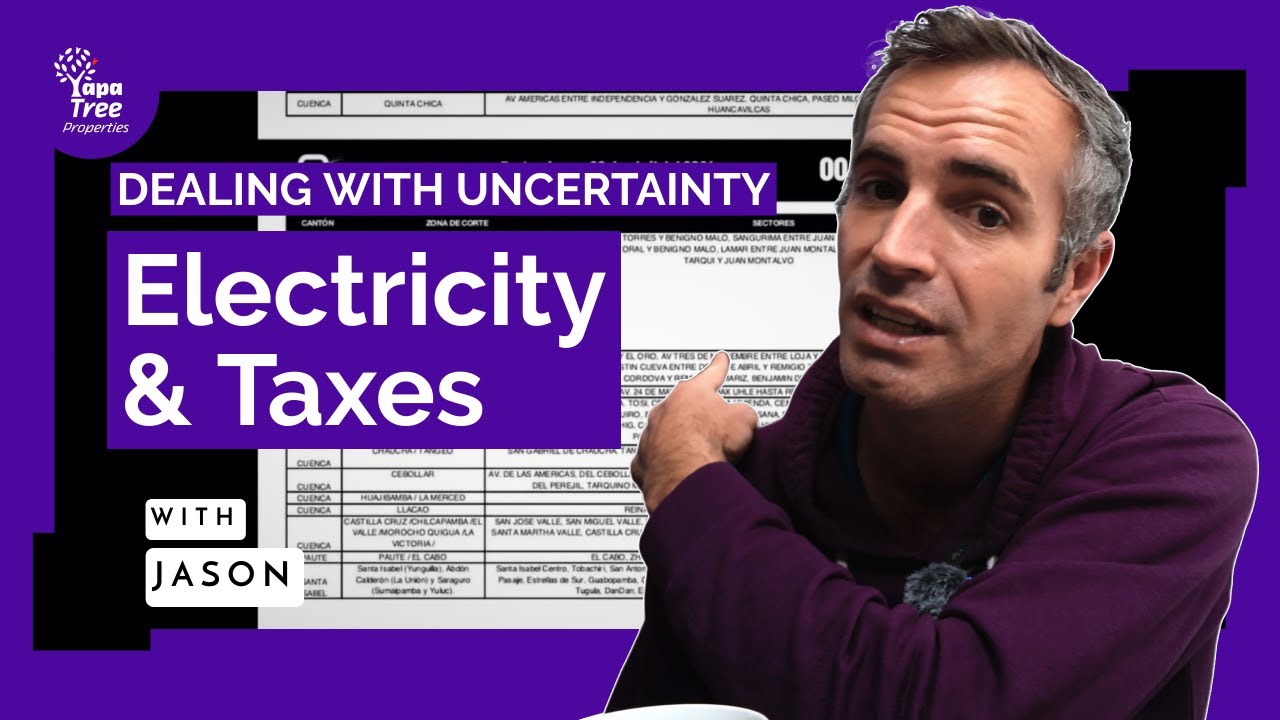Tucked away in the southern region of Ecuador, in the scenic province of Loja, is the serene and picturesque town of Vilcabamba. This idyllic location is often referred to as the “Valley of Longevity,” a title earned due to its high concentration of people over one hundred years old. This intriguing phenomenon has led many to speculate that Vilcabamba holds the secret to a long and healthy life. However, the allure of Vilcabamba extends beyond its reputation for longevity. The town is a harmonious blend of stunning natural beauty and a lifestyle that has become a magnet for expats from all corners of the globe.

My wife and I visited there in June for the first time and saw it with newcomers’ eyes. So, for those who are Vilcabamba regulars please excuse my extra enthusiasm about the place. But we were amazed by both its beauty and serenity. We loved the three days we spent there and plan to return in early September for my wife’s birthday.
There is a lot going on in the Vilcabamba and we barely scratched the surface from the list. So, I will share with you the history, beauty, culture, and myths of Vilcabamba as well as our superior experience at Izhcayluma Eco Resort. At the end of the article, I will mention some other options for things to see and do.
History

The area around Vilcabamba has been inhabited for over 5,000 years, with evidence of pre-Inca tribes dating back to 3000 BC. The Inca eventually conquered the region in the 15th century and named it “Willkapampa,” meaning “sacred valley” in Quechua. After the Spanish conquest of Ecuador in the 16th century, the town became known as Vilcabamba. The final remnants of the Inca empire retreated to Vilcabamba and set up a “Neo-Inca State” that resisted Spanish rule for thirty-five years.
For centuries, Vilcabamba remained an isolated town, largely cut off from the outside world by the surrounding mountains. This allowed the indigenous inhabitants to maintain many of their traditions and also contributed to the town’s reputation for longevity and health. Vilcabamba first gained international fame in the 1970s when a study found an unusually high number of centenarians among its residents. This led to speculation about the reasons behind their longevity and Vilcabamba’s nickname as the “Valley of Longevity.”
In recent decades, improved access to Vilcabamba has led to an influx of expats and tourists. However, the town has retained much of its natural charm and tranquility. For many, Vilcabamba represents an oasis of wellness, adventure, and simple living in an increasingly complex world. The town has become a popular destination for those seeking an alternative lifestyle, especially among retirees and digital nomads. While development has increased, strict building regulations aim to preserve Vilcabamba’s natural beauty and small-town feel.
Another thing that attracts people is the natural beauty that surrounds the community.
Natural Beauty

Vilcabamba is beautifully ensconced within the awe-inspiring Andes Mountains, with the majestic Mandango Mountain standing sentinel over the town. The region’s fertile soil, coupled with its tropical climate, creates a paradise for nature enthusiasts. The lush green landscapes, vibrant flowers, and a diverse variety of bird species make Vilcabamba a living, breathing canvas of nature’s artistry.
The mountains surrounding Vilcabamba offer stunning vistas and excellent hiking opportunities, from short trails to multi-day treks. The town is intersected by four rivers, including the Chamba River, providing swimming holes, fishing spots, and opportunities for kayaking and tubing. The nearby Podocarpus National Park is home to spectacled bears, mountain tapirs, and over 600 species of birds. The park’s diverse terrain, from cloud forests to high-altitude grasslands, offers habitat for a stunning array of flora and fauna, including orchids, bromeliads, and the endangered Andean cock-of-the-rock.
Culture and Lifestyle

Despite its modest size, Vilcabamba boasts a rich and vibrant culture. The town’s central square serves as a bustling hub of activity, with locals and expats mingling in the numerous cafes, restaurants, and artisanal shops. The local market is a sensory delight, offering a wide range of fresh fruits, vegetables, and local delicacies that reflect the region’s agricultural bounty.
Vilcabamba has a strong musical tradition, with local bands often performing in the central square. The town also hosts several festivals throughout the year, including Carnaval in February, the Fiesta of San Pedro in June, and the Founding of Vilcabamba festival in August. The local dance, known as the San Juanito, is performed at festivals and social gatherings.
The expat community in Vilcabamba has grown substantially in recent years. Drawn by the natural beauty, outdoor activities, low cost of living, and tranquility, expats have integrated into the local community. Many own and operate small businesses, like cafes, bakeries, yoga studios, and tour companies. The blend of local and expat cultures gives Vilcabamba a cosmopolitan yet small-town feel. Locals are friendly, and Vilcabamba has a strong sense of community where people look out for one another.
Health and Longevity

Vilcabamba’s reputation as the “Valley of Longevity” is well-earned … and somewhat misplaced. The town has an unusually high number of residents who live well into their 90s and beyond, but why?
In 1970, researchers discovered the inhabitants of the valley had very low cholesterol levels, and very few suffered from heart disease, even in the oldest of the population. This led them to believe that a combination of factors, including the clean air, pure water, diet, and active lifestyle that are inherent to Vilcabamba led to their health, and it probably does.
The Vilcabambans follow a diet high in locally-grown fruits and vegetables, whole grains, and legumes, with minimally processed foods and red meat. The surrounding mountains provide fresh water and clean air. Most residents stay physically active with regular walking, working in the fields, gardening, and other physical labor. The slower pace of life and tight-knit social connections also contribute to lower stress levels, an important factor for health and longevity.
Some studies point to a genetic component as well, as many Vilcabambans are descended from a small group of original settlers. However, environment and lifestyle also play a key role. Vilcabamba’s natural beauty and tranquility draw many visitors and expats seeking to adopt the healthy habits of the locals. Several spas and retreat centers offer programs focused on health, wellness, and longevity.
But those researchers also concluded that the number of centenarians in the valley was much higher than the average in other populations. This, it turns out, was erroneous. There were two primary reasons for this:
- The inhabitants habitually overstated their ages. Looking at census records in the following years, some of the researchers noticed that people they had interviewed claimed to have aged a decade in a year or two between their discussion with the researchers and the census.
- The common use of identical names made it difficult to track true ages through records. They resorted to asking for more information than the person’s name, and, with that, they were able to determine the actual ages of the living people.
Further research determined that few people in the valley lived to a hundred, and any difference in the percentages was minimal. They did find an above-average percentage of elderly in the area, but that turned out to be due to migration. Younger people tended to leave while older people moved into the region.
The fact that it is not a “fountain of youth” should not deter you from traveling there, though. It offers plenty of enticements for visitors.
Why You Should Visit

Vilcabamba, Ecuador, is truly a unique destination. Its breathtaking natural beauty, vibrant culture, relaxed lifestyle, and reputation for longevity make it a compelling choice for those seeking a healthier, more natural way of life. Whether you’re an expat looking for a new home, a traveler in search of adventure, or simply someone in search of the secret to a long and healthy life, Vilcabamba has something to offer you. This charming town is not just a place to live; it’s a place to thrive. There are also plenty of options for lodging. The one my wife and I chose was Izhcayluma Eco-Resort.
Izhcayluma Eco-Resort

When you visit, you should consider staying here. Izhcayluma Eco-Resort is reasonably priced, comfortable, and welcoming. What you’ll find is more than a place to stay. You’ll find a community, a family, and they will invite you in with open arms. Peter, one of the owners, was happy to discuss his history and that of the resort with me.
History

In the early 90s, twenty-year-old Peter left the small town in Bavaria where he was born. He went backpacking in Mexico. He was young enough to believe that the world was like his experiences in Germany. He assumed all other cultures were as structured and punctual as his life had been. The relaxed nature of Latin America both surprised and appealed to him. A dream formed, and he decided to open a beach bar in Mexico.
First, though, he had to return home and fulfill his contract with the German Navy. During his four years aboard a minesweeper, he kept his plans firmly fixed in his mind.
He realized that, in order to manifest his idea, he would need to speak Spanish. After leaving the Navy, he decided to spend a year in Latin America. He wanted to start in Argentina and end in Mexico, learning about the various countries, cultures, and languages along the way.
Then he arrived in Ecuador. He fell in love with it. He traveled around Ecuador for three months and, toward the end of his time, he made it down to Vilcabamba. The dream he had clung to for years transformed in a moment. The vision of a beach on the bar in Mexico became one of the backpacker’s havens in Vilcabamba.
He returned home and told his family. They told him he was crazy, but his older brother, Dieter, said, “I will go to Ecuador with you and determine just how crazy you are.” Dieter worked in a factory and was tired of the grind and the cold winters in Germany. He wanted to get away from it, even if it was temporary, and this gave him an opportunity to do so. Dieter had also done his own backpacking years before, and the idea of traveling again and seeing more of the world appealed to him for many reasons.
When they arrived in Vilcabamba, Dieter understood Peter’s vision, and they decided to make it happen. They found a twenty-five-acre farm for sale and purchased it without hesitation.
The locals referred to it as “Izhcayluma,” but no one they asked knew what the word meant or how to spell it.
When it came time to advertise, Peter did his best to spell the word phonetically. Sometime later, they met a man who spoke Quechua. He explained that the word, which should be spelled “Ishcailuma” means “two hills” and refers to the two hills on the property. Since the place already had name recognition, they opted to retain their spelling, even though it was not technically correct.
Dieter convinced his brother to build some private cabins with bathrooms for people who wanted to visit but did not want to share a bathroom or bunk in a dorm. Over time, the place evolved into the resort my wife and I visited this past weekend.
In 2009, Peter had to leave for a year. They knew there was too much work for Dieter to manage the property on his own, so they reached out to a man named Raik, a fellow German who taught at a private university here in Ecuador and had visited Izhcayluma many times. Raik came aboard to help Dieter, and, after Peter returned, Raik remained. Now, with three of them, there is never a problem if one of them needs to leave for an extended period. It also helps that they do not run the place like a traditional business.
Not A Business

Peter, Dieter, and Raik do not consider Izhcayluma a business in the traditional sense. The resort has to make money to pay the staff and maintain itself, but making money is not the goal for them. Their primary objective is to build community. Izhcayluma is their home, the staff is their family, and they share their home with others.
Everyone on the staff was nice and helpful. They run the place smoothly and with a lot of laughter. If I had to describe the atmosphere in one word, I would say it is joyous. They embrace the Ecuadorian concept of “mañana” and don’t get hung up on the various problems that life presents.
They welcome anyone and everyone. Their only request of their guests is that everyone respects everyone else and is at least cordial. If there are interpersonal problems, there is plenty of space to avoid each other. Don’t let those problems interfere with your enjoyment or anyone else’s.
One of the goals of the brothers from the founding of the resort was to give back to the community.
Giving Back
When the brothers purchased the property, it was a farm. Over the years, they have invested not only in their resort but in the reforestation of the area. There is an abundance of trees on the property today, and each one was planted by the brothers or staff of the resort. With the return of the trees, various forms of wildlife have also returned.
Accommodations
My wife and I stayed three nights in one of their private cabins with two twin beds and a private patio. However, since the beds were side-by-side in a wooden frame with only a thin strip of wood separating them, it was more like sleeping in a king-sized bed and was quite comfortable.
The bathroom was stunning. The shower stall was large and made of river stones. It was both beautiful and functional.

They also have superior cabins, private rooms, and backpacker accommodations. The superior cabins have two queen-sized beds and private patios with views of Mandango Mountain. The private rooms can hold up to six people in twin-sized beds and bunks, these have shared patios. And the backpacker accommodations are dormitory-style with shared bathrooms.
All of the patios, whether private or shared, have hammocks. I found the hammock quite comfortable and took a lovely nap in it one afternoon, and I am not a small guy.
Yoga

They have a Yoga Shala that is spectacular. It has a beautiful wood floor and is open on three sides with incredible vistas. It was designed so it keeps out all but the worst rain and wind. They have a smaller, enclosed Shala for those rare occasions when the weather prevents them from using the main one. They offer free yoga sessions each morning. They also have other yoga sessions like Vinyasa and Air Yoga.
Spa
The spa offers massage and Reiki treatments along with manicures, pedicures, and skin treatments. Their technician and therapist are delightful women who are excellent at their jobs. The prices for these services are beyond reasonable and mean that spa treatments are not even financial splurges as they often are at resorts.
Restaurant

The restaurant offers amazing views of the surrounding countryside to go with its excellent selection of food. If you book a week or more, a continental breakfast is included, and there are a la carta options you can purchase like eggs and breakfast meats. They have lunch and dinner menus with a variety of options. My wife and I liked everything we tried during our stay.
The staff in the restaurant was great. They were attentive, helpful, and pleasant. The entire atmosphere of the restaurant, like the rest of the resort, is laid back and fun.
Activities

While the main activities at the resort are rest and relaxation, there are several hiking options on and around the property. They offer some options for guided tours, and you can go horseback riding. They also have a small patio with a hammock that’s intended for bird watching. Neither my wife nor I went swimming, but they do have a pool, and it is as beautiful and well-maintained as the rest of the property.
Getting to Izhcayluma
The easiest way to get to Izhcayluma is on their shuttle that runs daily from Hostal La Cigle (Honorato Vasquez 7-80 y Luis Cordero) in El Centro. It leaves at 1:30 pm, and they ask that you arrive about fifteen minutes early. When my wife and I did so, the driver was in the Hostal eating lunch. The shuttle costs $20 per person.
Side note: when my wife and I visited, there was another man on the shuttle with us. He went to the resort but wasn’t staying there. He took a taxi from Izhcayluma to the hotel where he was staying. So, even if you are not planning to stay at Izhcayluma, the shuttle can be an alternative way to get to Vilcabamba rather than other options.
If you prefer, you can hire a driver to take you to the resort. The cost will be around $120, and they usually limit to four people.
You can also take the bus from Cuenca to Loja, then Loja to Vilcabamba, then a shuttle to Izhcayluma. You can also do this from many other places in Ecuador. Here are more details about how to get there.
Many Other Places to See and Things to Do in Vilcabamba

A casual Google search will pull up information about these places.
- Riverwalk to Rumi Wilco
- See Podocarpus National Park
- Cerro Mandango
- Yamburara recreation area
- Vilcabamba Center and Central Park
Horseback riding, birdwatching, hiking, and nature walks are popular pastimes. And there is a charming Parque in the center of “downtown” Vilcabamba that is great for watching locals and visitors alike. A fair number of tourist shops as well as some good restaurants can also be discovered around the park.
The restaurants seem to change over time with some regularity. Your best bet will be to inquire with friends who have recently dined out in Vilcabamba for their suggestions. One of our editors recommended us El Mexicano, one of the best Mexican food in this part of Ecuador.
Conclusion
Vilcabamba is wildly worth visiting. It provides a lovely escape from the rapid pace of life most of us are accustomed to. Even those of us who live in Cuenca will find the lifestyle in Vilcabamba “leisurely and inviting.” Whether you are interested in nature, or culture, or just want to relax, you can find all of those things there. The Izhcayluma Eco-Resort offers, by itself, a worthwhile experience. Everybody who has visited Vilcabamba comes away with stories and pleasant memories and if you haven’t been, I recommend giving it a try.

